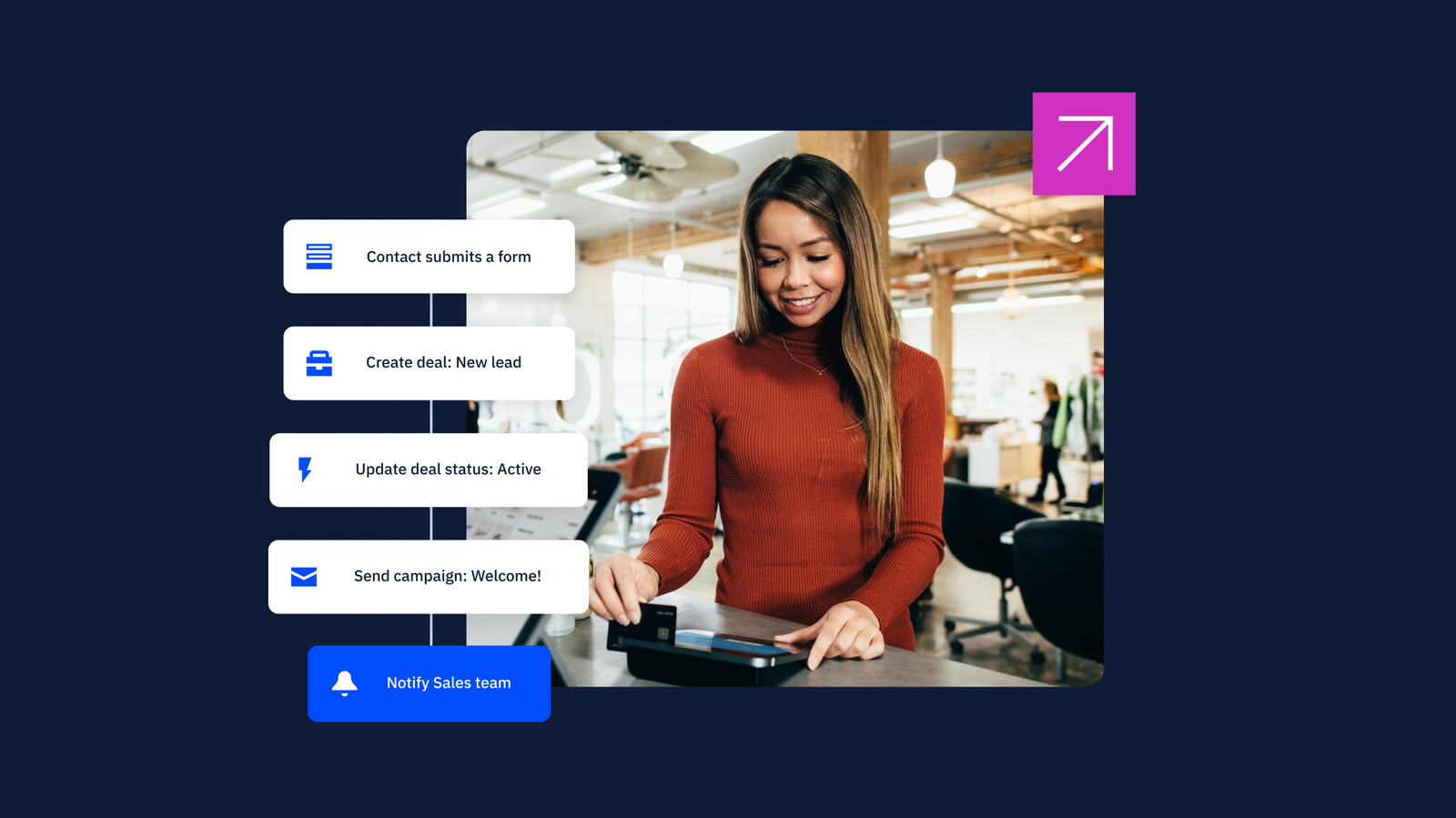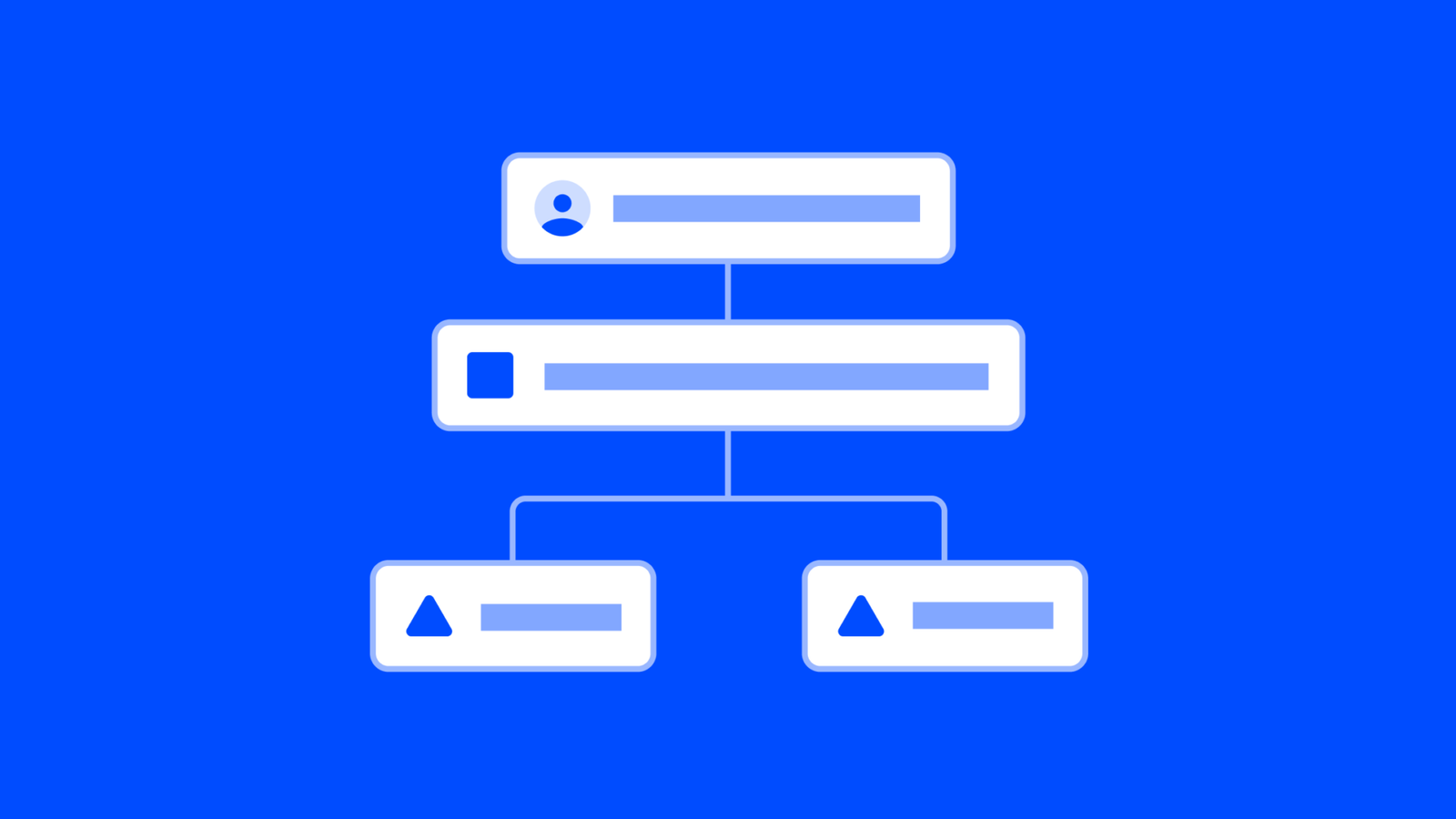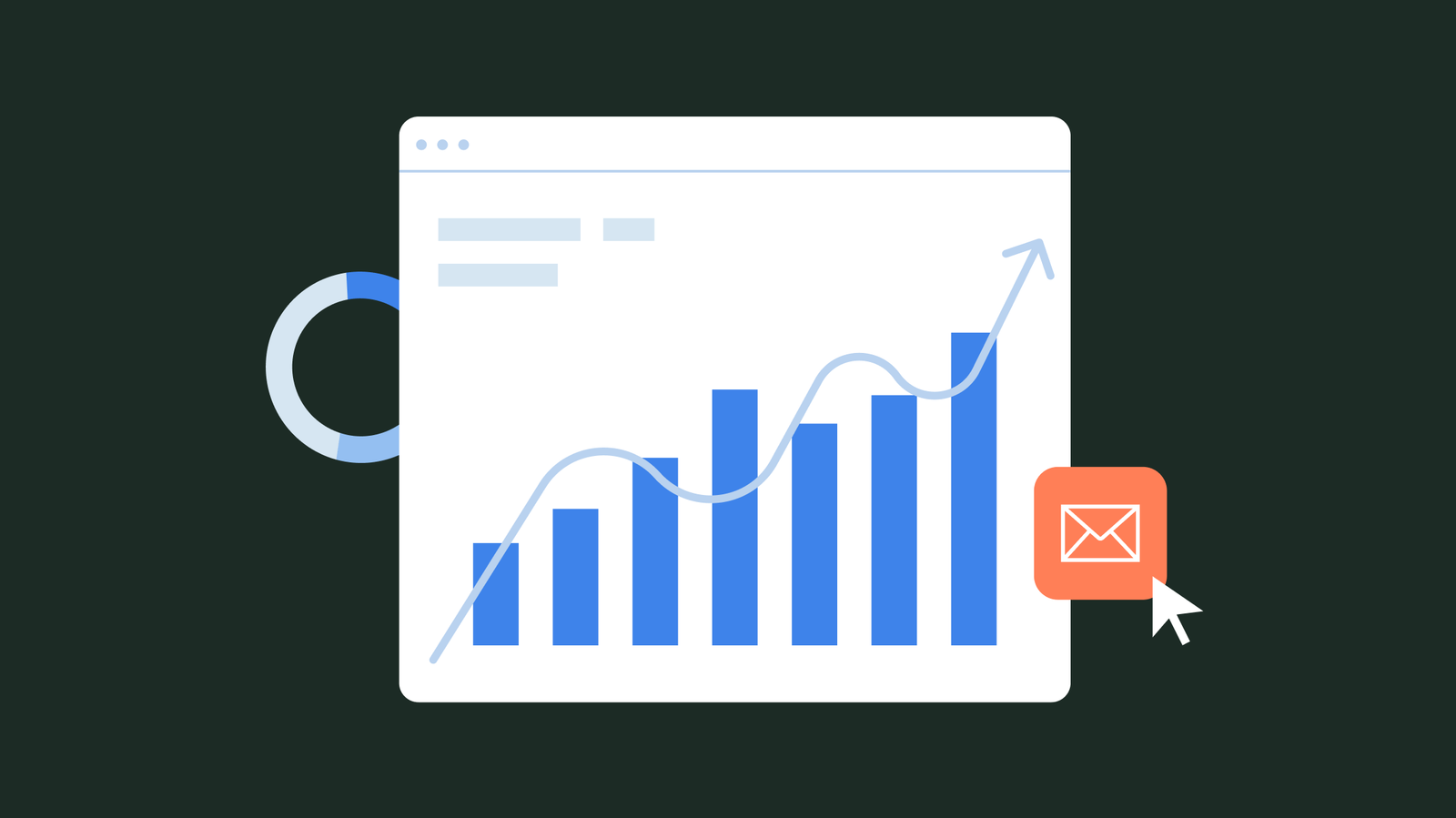Did you know that online courses have seen a 900% increase in enrollment over the last decade? With such a boom, effective communication is more crucial than ever. That's where email automation comes in. Automating your email communications can streamline your workflow, nurture potential customers, keep students engaged, and boost course completion rates.
But why should you care about email automation? Imagine never having to manually send out welcome emails, reminders, or follow-ups again. Automation can handle all of those repetitive tasks for you, ensuring your students get the right information at the right time. This blog will dive deep into how having an email list and automation can transform your online courses, with a special focus on how ActiveCampaign can be your best friend in this journey.
The importance of email automation in online courses
Email automation isn't just a fancy tech term—it's a game-changer for online course creators. Automating your emails can save you hours of work, keep your students engaged, and drive higher enrollment and completion rates.
Here's why email automation is crucial for your online courses:
1. Time savings and efficiency: Manually sending emails to each student can be incredibly time-consuming. With email automation, you set up your emails once, and they get sent automatically based on triggers you define. This means you can focus more on creating great course content and less on administrative tasks.
2. Enhanced student engagement: Automated emails keep students engaged by providing timely and relevant information. For example, a welcome series can guide new students through the first steps of your course, while regular check-ins and resource emails keep them motivated and on track.
3. Higher conversion and completion rates: Statistics show that automated email campaigns can significantly improve conversion rates. According to one study, automated emails get 70.5% higher open rates and 152% higher click-through rates compared to standard marketing messages. For online courses, this means more students completing your course and potentially enrolling in additional courses you offer.
4. Personalization at scale: With segmentation and dynamic content, you can personalize your emails to different target audience segments without creating multiple campaigns. This ensures that each student feels like you're speaking directly to them, enhancing their overall experience.
5. Consistent communication: Consistency is key to maintaining student interest and trust. Automated emails ensure that your communication is timely and consistent, helping to build a strong relationship with your students. Whether it's a reminder about an upcoming webinar or a congratulatory message for completing a module, automation keeps your communication on point.
Up next, we’ll dive into the essential email automations every online course creator should implement.
Essential email automations for online courses
Email automations are the backbone of effective communication in online courses. They help you stay connected with your students and keep them engaged throughout their learning journey. While you can automate many different aspects of your online course, here are a few every online course creator should implement.
Welcome series

The welcome series sets the tone for your students' journey. It's the first interaction they have with your course after signing up, so making a great first impression is crucial. A welcome series aims to introduce yourself, outline what students can expect, and provide them with the resources they need to get started.
Key elements to include:
- Personalization (e.g., using the student’s name)
- A course overview
- Key resources and links
- Support contact information
Example welcome email sequence: A welcome series typically includes several emails spread out over a few days. Here is an example of a 3-part series.
- Day 1: Welcome email—Introduction and course overview.
- Day 3: Resources email—Links to essential materials and resources.
- Day 7: Engagement email—Encouragement and tips for starting the course.
Onboarding sequences
Onboarding sequences ensure your students have all the information and resources they need to start the course smoothly. This sequence guides them through the initial setup and helps them get familiar with the course structure and tools.
Key elements to include:
- Step-by-step instructions
- Links to resources
- Support contact information
Example onboarding sequence: An onboarding sequence helps students get up to speed quickly.
- Day 1: Initial onboarding email—Welcome and step-by-step setup instructions.
- Day 3: Resource follow-up—Additional resources and FAQs.
- Day 5: Check-in email—Offer support and ask if they need any help.
Nurture campaigns
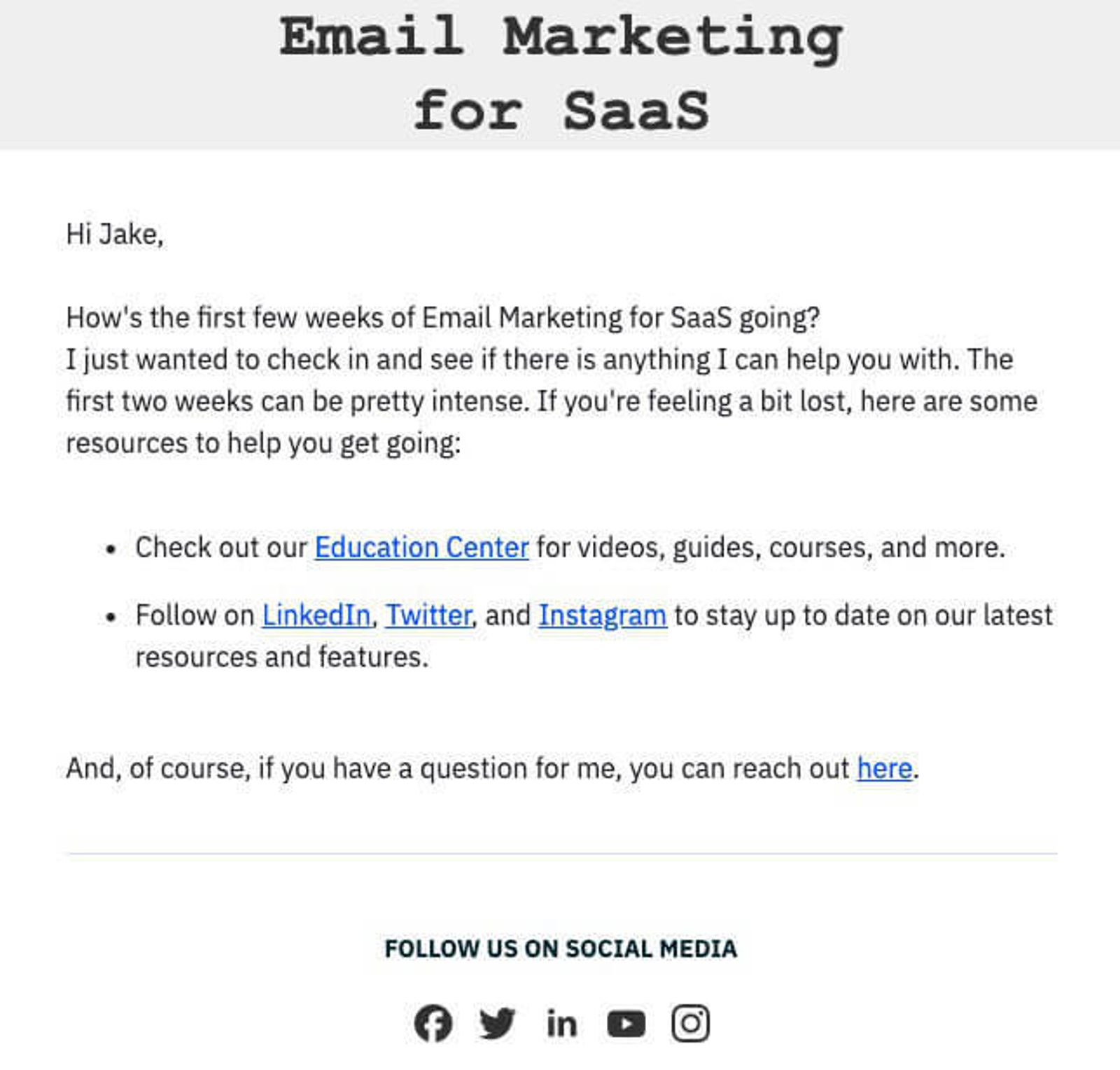
Nurture campaigns keep students engaged and motivated throughout the course. Regular communication ensures that students stay on track and receive the support they need to complete the course successfully.
Key elements to include:
- Regular check-ins
- Additional resources
- Encouragement and motivation
Example nurture sequence: A nurture campaign maintains student interest and motivation.
- Weekly: Check-in email—Progress updates and encouragement.
- Mid-course: Survey email—Gather feedback and offer additional resources.
- At specific milestones: Resource share email—Share valuable materials and tips.
Course completion emails
Course completion emails celebrate your student's achievements and encourage further engagement. These emails can offer certificates of completion, suggest additional courses, or invite students to provide feedback.
Key elements to include:
- A congratulations message
- A certificate of completion
- Next steps and additional course recommendations
Example course completion sequence: A course completion sequence acknowledges students’ efforts and keeps them engaged. While this can be done in a single email, you can keep students engaged longer by sending resources over a few weeks.
- Immediately after completion: Congratulations email—Celebrate the achievement and provide a certificate.
- 1 week after completion: Feedback request—Ask for a review and suggestions for improvement.
- 2 weeks after completion: Next course suggestion—Recommend advanced courses or related topics.
Re-engagement campaigns
Re-engagement campaigns are designed to reconnect with students who have become inactive. These emails offer personalized messages, special offers, or requests for feedback to bring students back to the course.
Key elements:
- Personalized message to encourage students to continue the course
- Special offers for similar courses they might be more interested in
- Request for feedback
Example Re-engagement sequence: A re-engagement campaign can rekindle interest in inactive students. Doing this over multiple emails will increase the chance they will open and read your emails.
- After 2 weeks of inactivity: Inactivity reminder—Gentle nudge to continue the course.
- After 1 month of inactivity: Special offer email—Provide a discount or bonus content.
- After 6 weeks of inactivity: Feedback request email—Ask for feedback on why they stopped engaging.
Advanced course recommendations

Advanced course recommendation emails suggest additional or more advanced courses based on the student’s progress and interests. This automation can help increase enrollments in other courses you offer.
Key elements:
- Personalized recommendations
- Course highlights, both for their current and recommended courses
- Direct enrollment links to recommended courses
Example recommendation sequence: A recommendation sequence helps students find their next learning opportunity.
- Immediately after completion: Advanced course suggestion—Recommend a more advanced course related to the one they completed.
- 1 week after suggestion: Reminder email—Encourage enrollment in the suggested course.
- 2 weeks after suggestion: Enrollment reminder—Highlight benefits and offer an incentive to enroll.
Feedback series

Feedback loop automations are crucial for gathering insights to improve your courses. These emails are triggered by specific events, such as course completion, milestone achievements, or test completions, and request feedback from students.
Key elements:
- Feedback requests, either on specific parts of your course or the course as a whole
- Surveys or questionnaires to help better the course
- Follow-up communication
Example automation sequence: A feedback loop helps you gather valuable insights from your students.
- Immediately after milestone: Milestone achievement email—Congratulate and request feedback on the milestone.
- 1 Week after milestone: Feedback request—Follow up with a survey or questionnaire.
- 2 Weeks after milestone: Follow-up survey email—Encourage completion of the survey with a reminder.
These essential email automations will help create a seamless and engaging experience for your students, ensuring they receive the support and motivation they need to succeed.
Advanced automation techniques with ActiveCampaign
ActiveCampaign is an email marketing software that offers a suite of advanced automation features that can elevate your email marketing strategy. You can create highly tailored and effective communication for your online course students by leveraging segmentation, personalization, and dynamic content.
Segmentation and personalization
Segmentation allows you to divide your audience into distinct groups based on specific criteria such as behavior, demographics, and engagement levels. This ensures that your emails are relevant to each segment, enhancing the overall effectiveness of your campaigns.
Some examples of how you can segment your students:
- Behavioral segmentation: Segment students based on their actions, such as course progress, quiz completions, or interaction with your emails.
- Demographic segmentation: Group students by age, location, job role, or any other demographic data you collect.
- Engagement segmentation: Identify highly engaged students and those who might need a nudge to stay on track.
With segmentation, you can send personalized messages that resonate with each group, improving open rates and engagement.
Dynamic content
Dynamic content allows you to create emails that adapt based on the recipient’s data. This means you can create one email that displays different content for different segments, saving time and ensuring each student receives a personalized message.
Combining segmentation and dynamic content:
- Personalized course recommendations: Use segmentation to identify students' interests and dynamic content to recommend courses based on those interests.
- Tailored resource emails: Segment students by their course progress and use dynamic content to provide resources that are relevant to their current stage.
- Customized check-ins: Send dynamic check-in emails that adapt based on student engagement levels, offering encouragement or additional support as needed.
Example: If you have a group of students halfway through your course and another group who just started, you can send a single email that provides progress tips to the first group and introductory tips to the second group, all through dynamic content.
Pre-built automations in ActiveCampaign
ActiveCampaign provides a range of pre-built automations that can save you time and streamline your email marketing efforts. These automations are designed to address common scenarios in online course marketing, making it easy to get started with effective email campaigns.
While none of the pre-built automations are specifically designed for course creators, they can all be easily adapted with just a few tweaks.
Welcome series
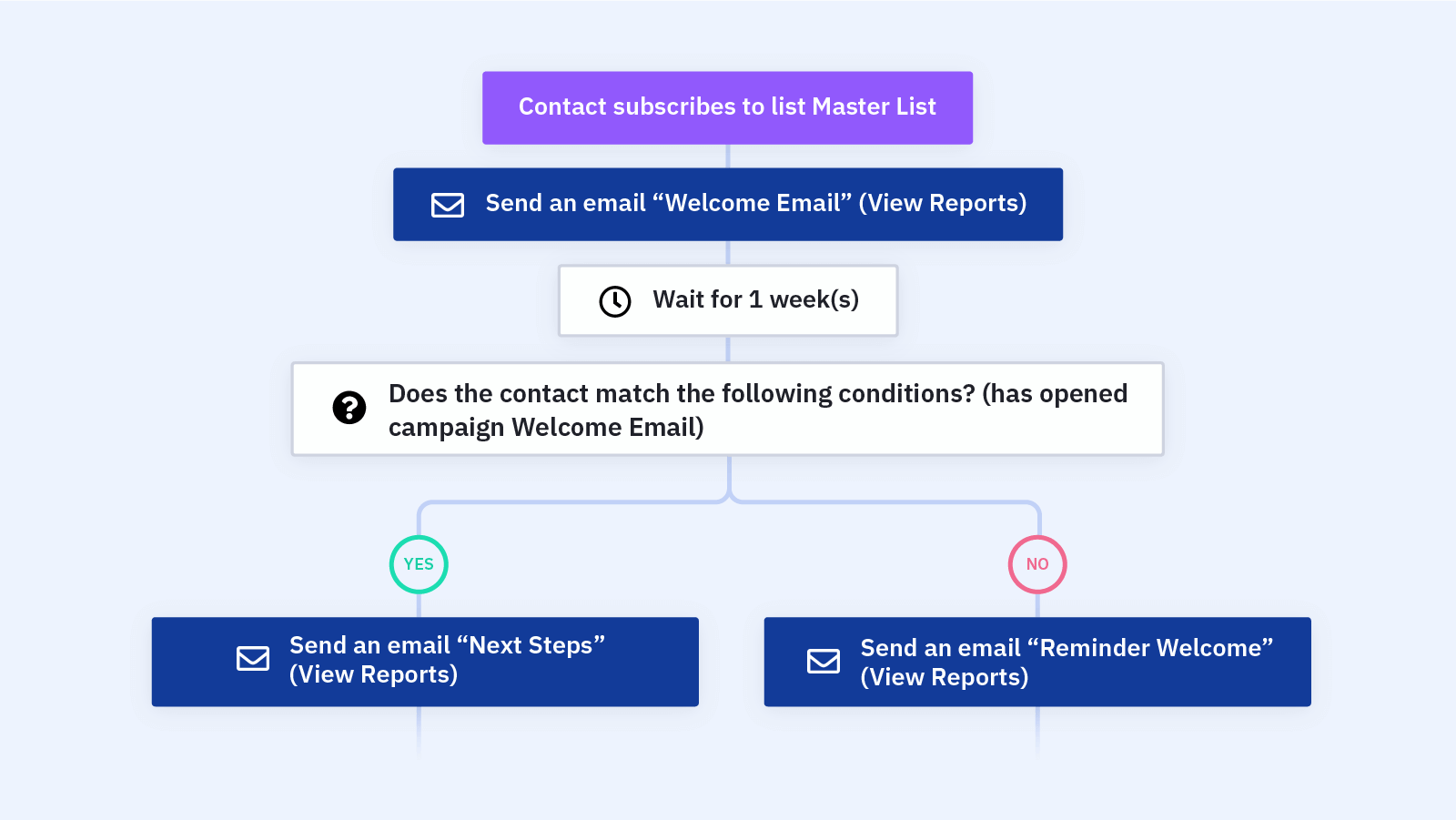
The ActiveCampaign Welcome Series sequence automatically welcomes new students and provides them with all the information they need to get started. It's a great way to set the tone and ensure a smooth onboarding experience.
Example sequence:
- Day 1: Welcome email—Introduction and course overview.
- Day 3: Resources email—Links to essential materials and resources.
- Day 5: Engagement email—Tips for success and encouragement to start the course.
Abandoned cart recovery
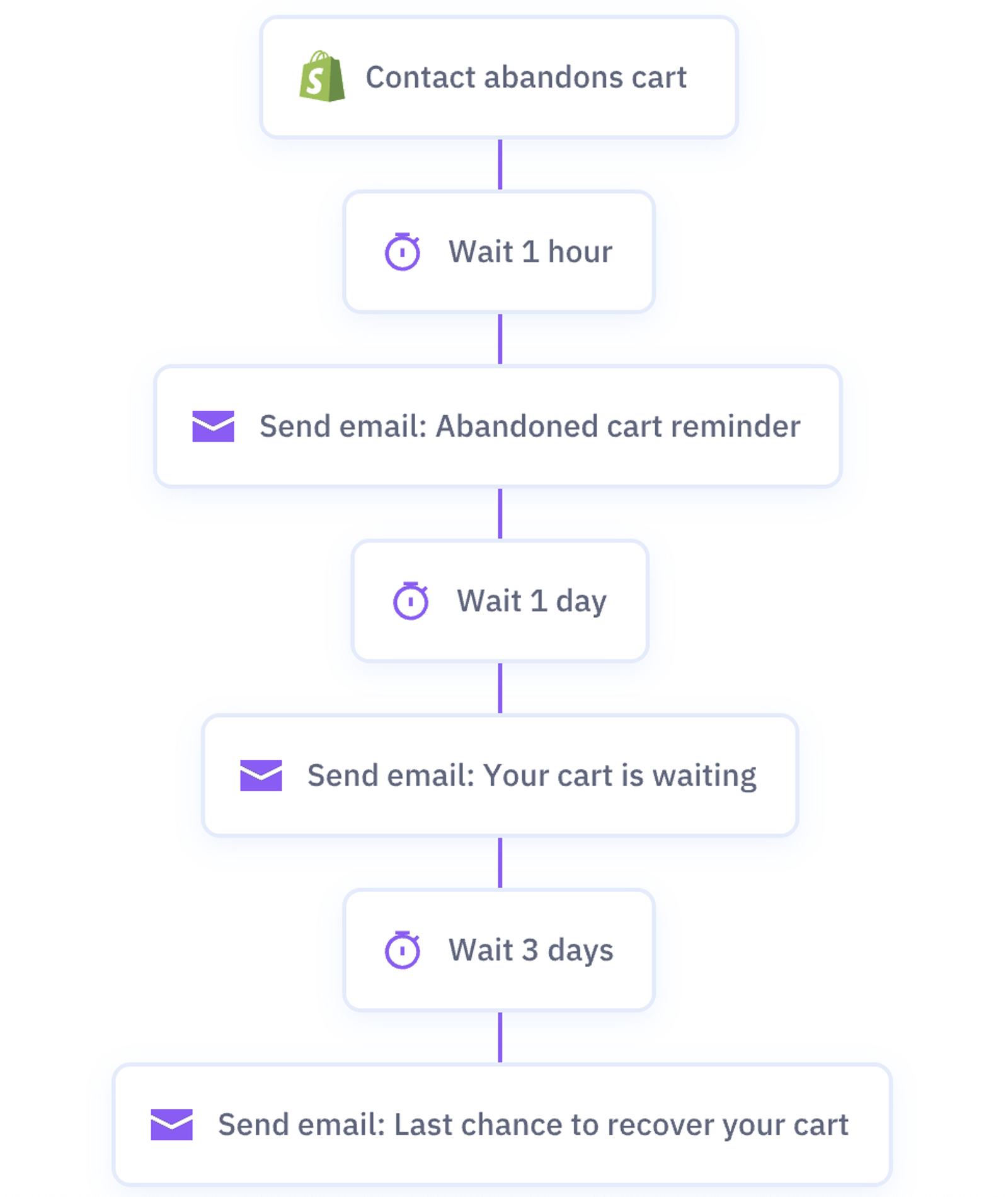
Re-engage students who started the enrollment process but did not complete it. This abandoned cart automation helps recover potential lost sales by reminding students of the benefits of enrolling.
Example sequence:
- Day 1: Reminder email—Highlight the benefits of the course and encourage completion.
- Day 3: Follow-up email—Offer a limited-time discount or bonus to incentivize enrollment.
- Day 5: Final reminder—Urgency email reminding them to complete their enrollment.
Check out other pre-built online course automations here!
Course recommendations
Suggest additional courses to students based on their current enrollments and interests. This automation helps increase enrollments in other courses by offering personalized recommendations.
While not directly related to online courses, the Book Recommendations automation can easily be adapted.
Example sequence:
- Immediately after completion: Advanced course suggestion—Recommend a related or advanced course.
- 1 week after completion: Reminder email—Encourage enrollment in the suggested course with student testimonials.
- 2 weeks after completion: Enrollment reminder—Highlight benefits and offer an incentive to enroll.
How to implement pre-built automations
Implementing these pre-built automations in ActiveCampaign is straightforward.
Here’s a step-by-step guide:
- Access automation templates: Go to the ActiveCampaign Marketplace and browse the available templates.
- Select a template: Choose the automation that fits your needs, such as the Course Reminder or Course Completion.
- Import the automation: While logged in, click the import recipe button to add it to your ActiveCampaign account.
- Customize the automation: Modify the email content, triggers, and timing to align with your specific goals and audience.
- Activate the automation: Once you’re satisfied with the setup, activate the automation to start sending emails to your students.
ActiveCampaign’s pre-built automations can help you get started managing your email marketing efforts, ensuring that your students receive timely and relevant communication.
Your email automation strategy starts now!
We’ve covered a lot of ground, from understanding the critical role of email automation in online courses to diving into specific automations that can transform your student engagement and course completion rates.
Automating your emails saves you valuable time and ensures that your students receive consistent, personalized communication that keeps them motivated and engaged. Whether you're just starting or looking to refine your email strategy, implementing these essential automations will elevate your online course business.
Recap of key points:
- Welcome series: Make a stellar first impression with personalized welcome emails.
- Onboarding sequences: Guide your students through the initial steps with ease.
- Nurture campaigns: Keep students engaged and motivated throughout the course.
- Course completion emails: Celebrate achievements and suggest next steps.
- Re-engagement campaigns: Reconnect with inactive students with personalized offers.
- Advanced course recommendations: Drive further enrollments with tailored suggestions.
- Feedback loop automations: Gather valuable insights to improve your courses.
Ready to take your email marketing to the next level? Start implementing these strategies today and see the difference they can make. And what better way to manage and automate your education marketing than with ActiveCampaign? With our powerful tools and extensive template library, you can create seamless, personalized communications that keep your students coming back for more.
Sign up for a 14-day free trial of ActiveCampaign and discover how easy it is to automate your email marketing and enhance your online course business. Let’s make your email marketing strategy a game-changer!




